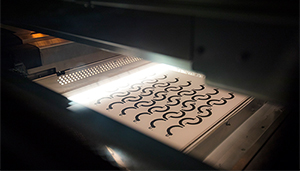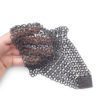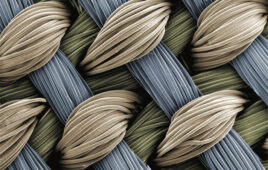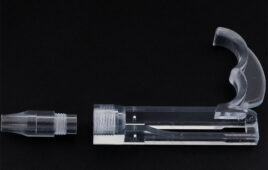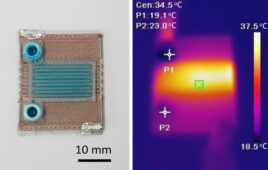The new Multi Jet Fusion process out of HP is but the latest 3D printing technology to up the game for medical device development. Here’s a roundup of what’s available.
Jon Eric Van Roekel, Proto Labs
The medical device industry continues to be driven by innovation. Some sources, including medical market research firm Kalorama Information, say that medtech companies this past year will have spent an average of 7% of revenue on R&D, which is higher than most industries.As those innovations are brought to market in the form of new products and services, medtech companies will look to rapid manufacturing processes for prototyping, functional and regulatory testing, and, ultimately, end-use production.
(Network with Proto Labs experts at DeviceTalks West, Dec. 11–12 in Orange County, Calif.)
Fittingly, our manufacturing industry generally – and 3D printing specifically – is driven by innovation. Indeed, key technological developments and new applications in industrial-grade 3D printing, or additive manufacturing, continue to advance this technology, which has only been around for a little more than 30 years.
Medtech companies are already using 3D printing in an impressive variety of ways: vertebra replacements for the human spine; prosthetic components; surgical instruments; operating-room equipment; handheld devices; in dentistry, clear (transparent) options for braces, aligners, and retainers; and so on.
Multi Jet Fusion joins the 3D printing lineup
One notable additive manufacturing newcomer is Multi Jet Fusion (MJF), launched last year by technology giant HP and recently adopted by multiple 3D printing service bureaus. MJF is a production-grade 3D printing technology that builds fully functional plastic prototypes and production parts faster than comparable processes, and with detailed precision and improved isotropic mechanical properties.
The technology uses an inkjet array to selectively apply fusing and detailing agents across a bed of nylon powder, which are then fused by heating elements into a solid layer. After a layer is built, a fresh layer of powder is distributed on top of the previous layer, and the next phase continues until the build is complete. The process uses an engineering-grade nylon 12 powder, so parts are durable and suitable for functional testing and end use.
Proto Labs was one of a handful of sites that tested the technology before it hit the market. “As far as what we’re testing in, it is definitely becoming a faster way to build parts” compared to some other 3D printing processes, according to Joe Cretella, one of our applications engineers, who spoke with Medical Design & Outsourcing at MD&M East in New York.
Indeed, as a part of this testing, we worked closely with HP’s R&D team to fine-tune the process in order to consistently produce high-quality parts.
In August, following the testing phase, we added this process to our production capabilities. So, with the addition of MJF, we now offer five different industrial-grade 3D printing processes that can produce plastic, metal, and elastomeric parts and components. This array of platforms is a prime example of how additive manufacturing continues to advance and grow.
So what 3D printing technologies are available?
Designers and engineers can now choose from several distinct classes of 3D printing technologies. Your choice of “tool” just depends on what it is you’re designing and what its final application is. Here’s a brief roundup of some of the main industrial-grade 3D printing options:
- Stereolithography (SL) uses an ultraviolet laser that draws on the surface of a liquid thermoset resin to create thousands of thin layers until final parts are formed. SL is used to create concept models, cosmetic prototypes, and complex parts with intricate geometries.
- Selective laser sintering (SLS) uses a CO2 laser that lightly fuses nylon-based powder, layer by layer, until final thermoplastic parts are created. SLS produces accurate prototypes and functional production parts.
- Direct metal laser sintering (DMLS) uses a fiber laser system that draws onto a surface of atomized metal powder, welding the powder into fully dense metal parts. DMLS builds fully functional metal prototypes and production parts and works well to reduce metal components in multipart assemblies.
- PolyJet uses a jetting process in which small droplets of liquid photopolymer are sprayed from multiple jets onto a build platform and cured in layers that form elastomeric parts. PolyJet produces multi-material prototypes with flexible features at varying durometers and is often used to concept overmolding designs.
- Fused deposition modeling (FDM) works by feeding a filament or spool of plastic into a heated nozzle, which then extrudes successive layers of thermoplastics onto the workpiece. FDM offers a wide thermoplastic material selection and is leveraged for iterative prototyping.
- Carbon is the name of the company that is using a process called CLIP, Continuous Liquid Interface Production, which builds parts from the top down, unlike other additive technologies that work from the bottom up. Final plastic parts exhibit excellent mechanical properties and surface finishes.
- As mentioned, Multi Jet Fusion process selectively applies fusing and detailing agents across a bed of nylon powder, which are fused in thousands of layers by heating elements into a solid functional component. Final parts exhibit improved surface roughness, fine feature resolution, and more isotropic mechanical properties when compared to processes like SLS.
Ultimately, choosing the right process for your next project is a multi-faceted decision because it depends on project requirements and a multitude of variables. Our application engineering teams work with customers every day to help them determine the best 3D printing process for their particular needs.
Jon Eric Van Roekel is 3D printing process engineering manager at Proto Labs (Maple Plain, Minn.).

